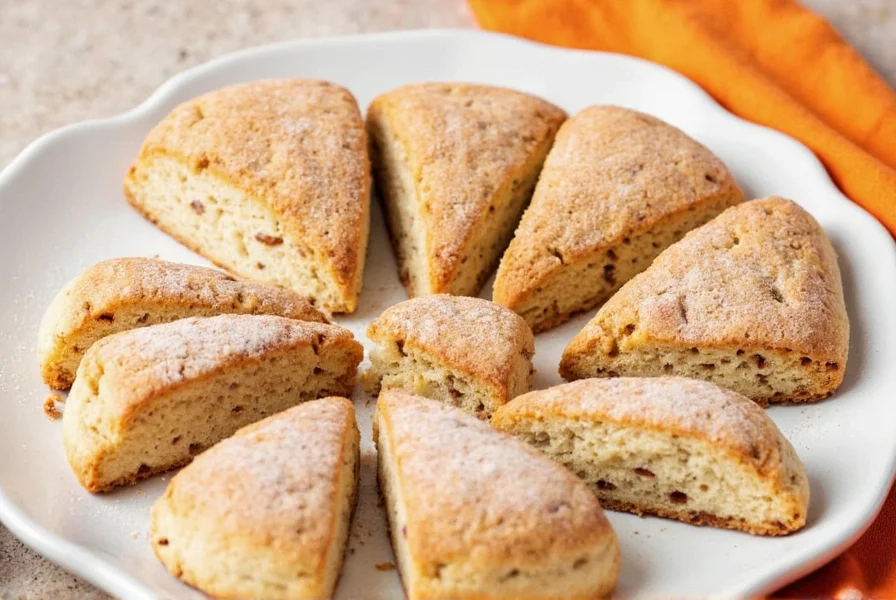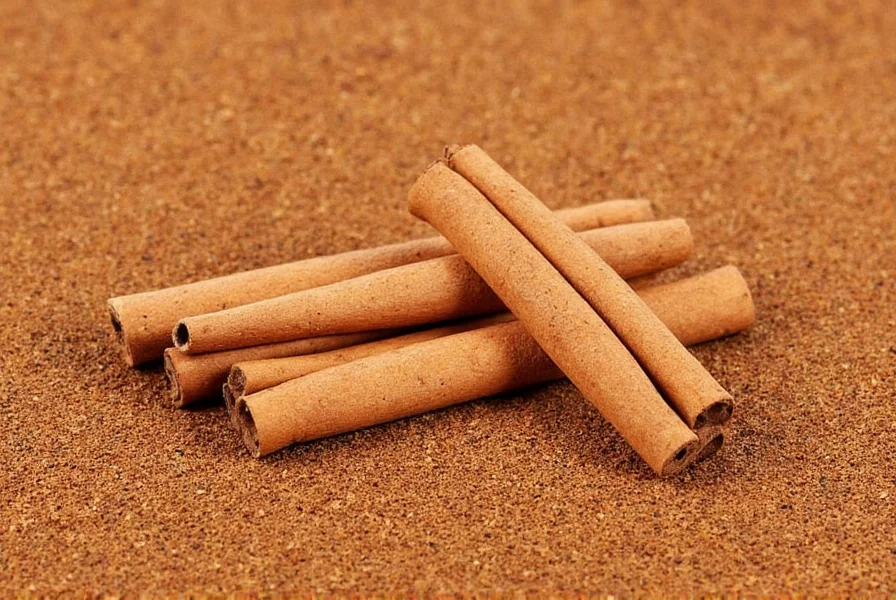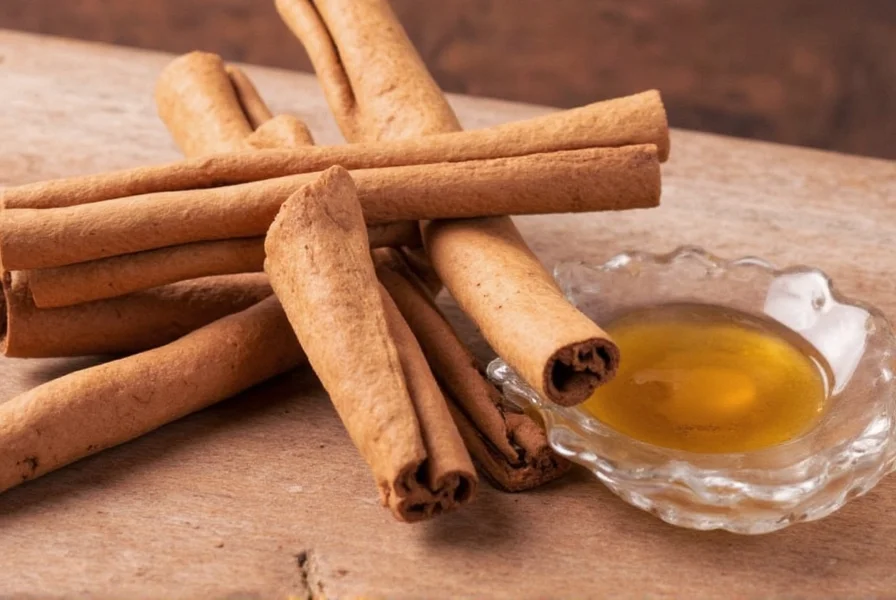Ceylon cinnamon is the safer choice for regular consumption due to its very low coumarin levels, while Cassia cinnamon contains high levels of coumarin that can be harmful to the liver when consumed in large amounts. This critical health difference is why it matters which type of cinnamon you use in your kitchen. While most store-bought cinnamon is actually Cassia, true Ceylon cinnamon offers a milder, sweeter flavor and is much safer for daily use. In this guide, we'll break down the key differences between Ceylon and Cassia cinnamon, including health risks, flavor profiles, and how to choose the right one for your needs.
Table of Contents
- What Is Ceylon Cinnamon Anyway?
- The Two Main Types of Cinnamon
- Key Differences Between Ceylon and Cassia
- Why You Should Care About the Difference
- How to Use Each Type in Cooking
- Buying Guide: Choosing the Right Cinnamon for Your Needs
- Frequently Asked Questions
- Conclusion: Spice Up Your Life with the Right Stick
What Is Ceylon Cinnamon Anyway?

Native to Sri Lanka (once known as Ceylon), this delicate spice has earned the title of "true cinnamon." It comes from the inner bark of the Cinnamomum verum tree and is harvested through a meticulous process that results in thin, multi-layered quills. These sticks are soft, easy to grind, and exude a mild, sweet aroma that's far more nuanced than its common counterpart.
The Two Main Types of Cinnamon
When you walk into any grocery store and grab a bottle labeled "cinnamon," there's a high chance you're dealing with one of two types:
- Ceylon Cinnamon – The rare, premium variety often called "true" cinnamon.
- Cassia Cinnamon – The more commonly available type, especially from China, Indonesia, and Vietnam.
Quick Comparison Snapshot
| Feature | Ceylon Cinnamon | Cassia Cinnamon |
|---|---|---|
| Scientific Name | Cinnamomum verum | Cinnamomum cassia |
| Common Names | True cinnamon, Sweet wood | Chinese cinnamon, Saigon cinnamon |
| Texture & Appearance | Thin, layered rolls | Thick, single-layer rolls |
| Taste | Mild, floral, sweet | Strong, spicy, slightly bitter |
| Price | Premium | Budget-friendly |
Key Differences Between Ceylon and Cassia
1. Origin and Source
Ceylon cinnamon originates almost exclusively from Sri Lanka, while Cassia is mainly grown in China, Indonesia, and Vietnam. Because of this, Cassia is easier and cheaper to produce, making it dominate global markets.
2. Flavor Profile

Ceylon cinnamon offers a smoother, sweeter, and more aromatic taste profile. It's subtle yet complex, making it ideal for desserts, baked goods, and beverages where balance matters. On the other hand, Cassia brings a punchier, bolder flavor — think red-hot candies or traditional holiday cookies. Its strong character makes it great for hearty dishes or recipes where other flavors need balancing.
3. Coumarin Content
This is a critical difference for health-conscious users. Coumarin is a naturally occurring compound found in many plants, including Cassia cinnamon — and in fairly high levels. Consuming too much Cassia regularly can be harmful due to coumarin's potential toxicity to the liver. According to the European Food Safety Authority (EFSA), the tolerable daily intake of coumarin is 0.1 mg per kg of body weight, and Cassia cinnamon can contain up to 63 times more coumarin than Ceylon cinnamon (source).
Ceylon cinnamon contains only trace amounts of coumarin, making it a safer option for those who use cinnamon frequently or in larger doses, like in teas or daily supplements.
4. Shelf Life and Storage
Ceylon cinnamon tends to retain its flavor longer due to its lower oil content. It also stores well without degrading quickly. Cassia may lose potency faster, so if you want to keep your spice cabinet fresh, consider buying smaller quantities or storing them properly in airtight containers away from light and moisture.
5. Price and Availability
As expected, Ceylon cinnamon is more expensive. It's harder to harvest, requires more labor, and is simply rarer. If you're on a budget or using cinnamon in bulk (like in baking during the holidays), Cassia might make more sense. But if you're experimenting with gourmet cooking or health-focused diets, investing in Ceylon could pay off in flavor and safety alike.
Why You Should Care About the Difference
You might be wondering why all of this matters. After all, they both smell like cinnamon, right?
- Flavor Matters: In delicate recipes, especially those involving dairy or fruit, Ceylon's subtlety shines where Cassia can overpower.
- Health Concerns: Regular consumers should watch their coumarin intake — especially if using cinnamon for blood sugar management or anti-inflammatory benefits.
- Authenticity: Some culinary traditions (especially Middle Eastern and European) specifically call for Ceylon for authenticity.
How to Use Each Type in Cooking
Ceylon Cinnamon Uses
- Baking: Perfect for cakes, custards, rice pudding, and anything creamy where the flavor needs to blend rather than stand out.
- Desserts: Try it in ice creams, whipped creams, and even chocolate sauces for a luxurious twist.
- Drinks: Ideal for chai blends, mulled wine, and morning smoothies.
Cassia Cinnamon Uses
- Baking: Great for gingerbread, pumpkin pie, and oatmeal raisin cookies where a bold flavor is desired.
- Main Dishes: Works well in braised meats, stews, and Moroccan tagines.
- Holiday Treats: A staple in Christmas cookies, hot cocoa, and spiced cider mixes.
Buying Guide: Choosing the Right Cinnamon for Your Needs
Here's how to shop smart when looking for either Ceylon or Cassia cinnamon.
Look at the Label
Always check the packaging. True Ceylon will say "Ceylon cinnamon" or "Cinnamomum verum." Avoid products that simply say "cinnamon" or "spice extract" without specifying the source.
Check the Form

- Sticks: Both types come in stick form, but Ceylon sticks are thinner and flakier. They'll easily crumble under pressure.
- Ground: Ground cinnamon is harder to distinguish visually, but Ceylon is lighter in color and finer in texture.
Consider Brand Reputation
Some trusted brands offer certified Ceylon cinnamon, particularly those that focus on quality ingredients. Look for organic certifications or specific labeling indicating the origin.
Recommended Products
| Product Name | Type | Features | Best For |
|---|---|---|---|
| Fairwinds Organics Ceylon Cinnamon Sticks | Ceylon | Organic, sustainably sourced from Sri Lanka, perfect for brewing and grating | Teas, gourmet desserts, gift baskets |
| Simply Organic Ground Ceylon Cinnamon | Ceylon | Light, sweet flavor; USDA Organic Certified | Baking, yogurt, spice blends |
| Frontier Co-op Ground Cassia Cinnamon | Cassia | Economical, strong flavor, non-GMO | Everyday baking, holiday treats, coffee blends |
| Spice Islands Whole Cassia Cinnamon | Cassia | Whole sticks ideal for simmering or infusing | Chai, mulled wine, stewed fruits |
Frequently Asked Questions (FAQ)
Is Ceylon cinnamon the same as regular cinnamon?
No, Ceylon cinnamon is not the same as what's commonly sold as "regular cinnamon." Most store-bought cinnamon is actually Cassia cinnamon, which comes from a different species of tree (Cinnamomum cassia) than Ceylon cinnamon (Cinnamomum verum). Ceylon is often called "true cinnamon" but is less commonly found in standard grocery stores.
What's the main difference between Ceylon and Cassia cinnamon?
The main differences are in appearance, flavor, and coumarin content. Ceylon cinnamon has thin, layered sticks with a lighter brown color, a sweeter and more delicate flavor, and very low coumarin levels. Cassia cinnamon has thick, single-layered sticks with a darker red-brown color, a stronger and spicier flavor, and significantly higher coumarin content which can be harmful in large quantities.
Why is Ceylon cinnamon more expensive than regular cinnamon?
Ceylon cinnamon is more expensive because it's more labor-intensive to produce. The harvesting process is meticulous, requiring the inner bark to be carefully peeled and rolled into thin quills. It's also primarily grown in Sri Lanka, where production is more limited compared to Cassia which is grown in multiple countries including China, Indonesia, and Vietnam where it's easier and cheaper to cultivate.
Can I substitute Ceylon cinnamon for Cassia cinnamon in recipes?
Yes, but with some considerations. Ceylon has a milder, sweeter flavor while Cassia is stronger and spicier. In most baking recipes, you can substitute them 1:1, but for delicate recipes (like custards or light sauces), you might want to use slightly more Ceylon to achieve the same flavor impact. For recipes specifically calling for Cassia's bold flavor (like gingerbread), you might miss some complexity with Ceylon.
How can I tell if I have Ceylon or Cassia cinnamon?
For sticks: Ceylon cinnamon forms thin, multiple-layered quills that are fragile and crumble easily. Cassia forms thick, single-layered, hard sticks that are difficult to break. For ground cinnamon: Ceylon is lighter in color (pale tan) and finer in texture, while Cassia is darker (reddish-brown) and coarser. The most reliable method is checking the label for "Ceylon" or "Cinnamomum verum" versus "Cassia" or unspecified "cinnamon."
Which cinnamon is healthier, Ceylon or Cassia?
Ceylon cinnamon is generally considered healthier for regular consumption because it contains significantly lower levels of coumarin, a compound that can be toxic to the liver in large amounts. Cassia cinnamon has much higher coumarin content, so while both offer health benefits like blood sugar regulation, Ceylon is safer for daily use, especially in larger quantities or for people with liver conditions.
How much cinnamon is safe to consume daily?
For Ceylon cinnamon, there's no established upper limit as it contains only trace amounts of coumarin. For Cassia cinnamon, the European Food Safety Authority recommends not exceeding 0.1 mg of coumarin per kg of body weight per day. This translates to approximately 1 teaspoon (2.5 grams) of Cassia cinnamon for a 150-pound (68 kg) person. People using cinnamon regularly for health benefits should opt for Ceylon to avoid coumarin concerns.
Can I use cinnamon for health benefits?
Both types of cinnamon have been studied for potential health benefits including blood sugar regulation, anti-inflammatory properties, and antioxidant effects. However, if you're using cinnamon specifically for health purposes and plan to consume it regularly or in larger amounts (like in supplements or daily teas), Ceylon cinnamon is the safer choice due to its minimal coumarin content. Always consult with a healthcare provider before using cinnamon therapeutically.
Conclusion: Spice Up Your Life with the Right Stick
The world of cinnamon is richer than we give it credit for. While both Ceylon and Cassia have their place in the kitchen, knowing the differences helps you make informed choices — whether you're aiming for a refined flavor or just trying to avoid long-term health issues.
Next time you reach for that spice jar or add it to your shopping cart, ask yourself: Do I want bold or balanced? Budget-friendly or better for my body? Once you've tasted the delicate elegance of Ceylon, you may never go back.
And remember, the best cinnamon is the one that fits your recipe, lifestyle, and personal taste — because spice is supposed to bring joy, not confusion.










 浙公网安备
33010002000092号
浙公网安备
33010002000092号 浙B2-20120091-4
浙B2-20120091-4